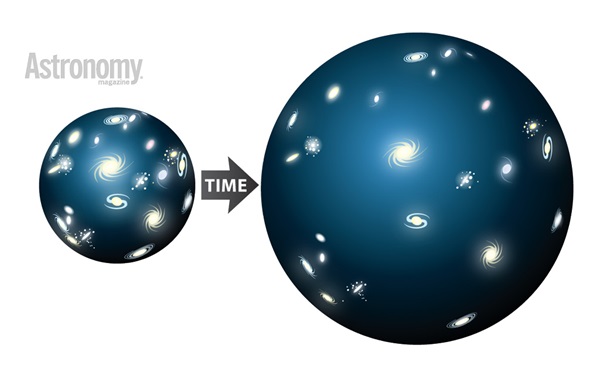Key Takeaways:
To understand why, note that the universe expands even while the light travels toward us. The speed of light is constant, but the path it needs to cover — the distance between the other galaxy and our Milky Way — is stretching with time. For example, a mile that the light beam crossed early in the history of the universe some time later becomes 2 miles, still later 3 miles, etc. Clearly, the length that light covers is always larger than the length it would have traveled if the universe were not expanding (which would be 13.3 billion light-years). In our particular case, one can calculate that the light actually has made a trip of about 33 billion light-years. This is the present-day distance between us and the other galaxy.
The distance between the two galaxies was smaller in the past. Light from the distant galaxy in this example was emitted when the universe was only one-thirteenth of its present size. Therefore, when the light left the galaxy, its distance to us was one-thirteenth of 33 billion light-years, or about 2.5 billion light-years. This is not in conflict with the age of the universe of 500 million light-years at the time for the same reason as before: The other galaxy and the Milky Way had the benefit of the expanding universe so as to find themselves farther away from each other than the speed of light traveling in a static universe over 500 million years would indicate.
University of Michigan, Ann Arbor










